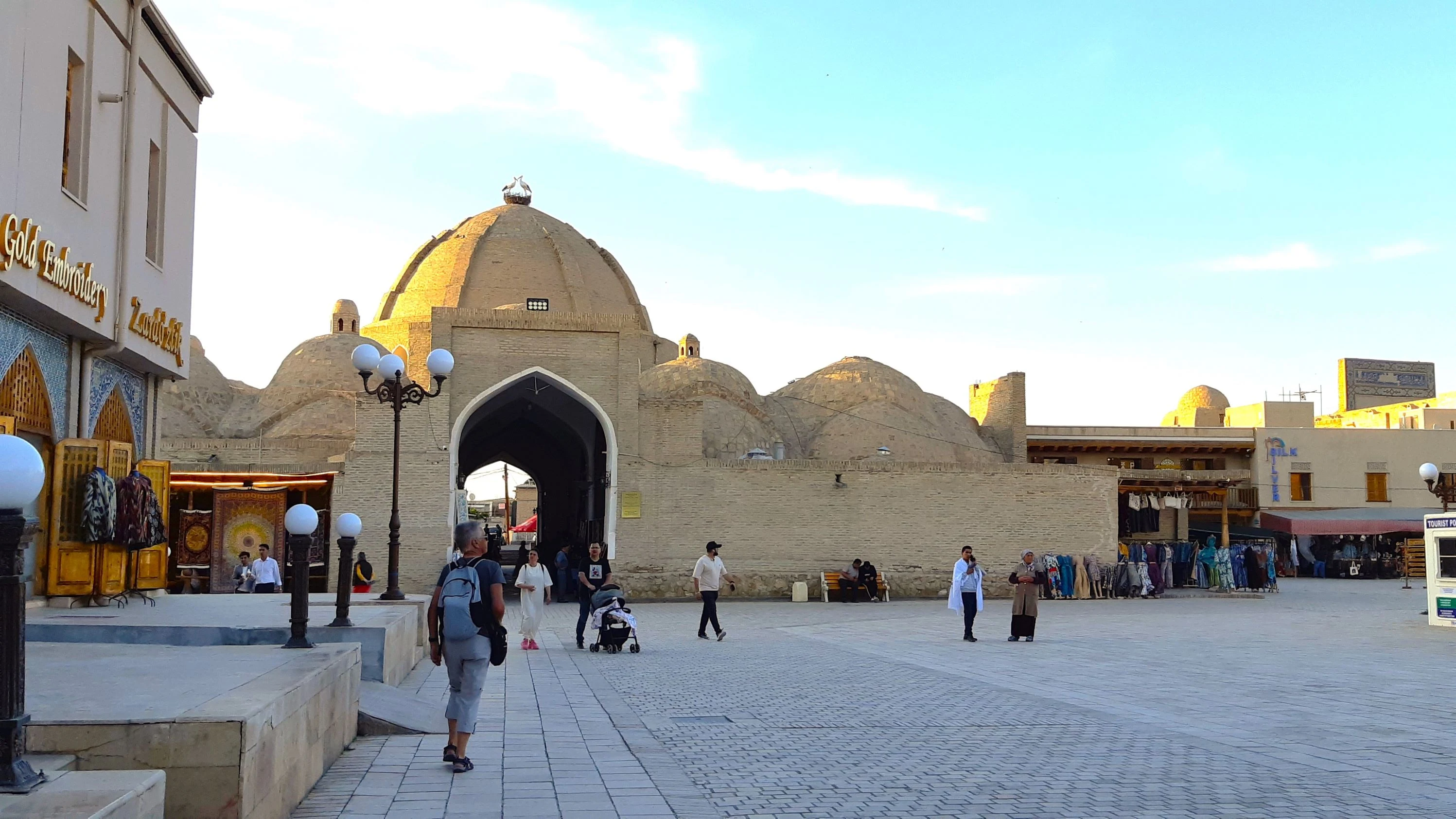Our travel along the historic Silk Road has led us to Uzbekistan in Central Asia, where our most recent stop was the ancient city of Samarkand. Leaving there, we made our way north by train to the beautiful walled city of Bukhara, once one of the great trading cities along the Silk Road.
 |
| The beautiful Mir-i-Arab Madrasa, Bukhara (UNESCO), Uzbekistan |
Bukhara region has been inhabited for at least 5 millennia, and the city has existed for half of that time. These days, the whole city has a population of over 280,000 (2020), but our focus was the iconic old town where most the historic sights are located. Bukhara’s old town is considered by UNESCO as the most complete and unspoiled example of a medieval town in Central Asia.
We stayed in a guest house in the old town. It was accessed through a traditional courtyard and our room was decorated with hand-painted designs - it was a delight. After admiring the artwork and unpacking, we went for a walk around the old town, enjoying its ambiance and walkability. It's full of narrow streets flanked by low-rise adobe buildings, grand mosques, and ornate mausoleums.
We quickly found the main square which is surrounded by beautifully restored historic buildings such as the Kalon Minaret and Mosque, and the Ark Fortress. The Minaret was built in 1127 and stands an imposing 46.5 metres tall, and the Mosque was built later in 1514 after the first one was destroyed by Genghis Khan. It is Bukhara’s primary mosque, and can hold 12,000 worshippers. The Fortress dates back to the 5th century.
-a.jpg) |
| The Lyabi-Hauz pond, Bukhara (UNESCO), Uzbekistan |
The square also holds the 16th century Lyabi-Hauz, a pond that was once used to hold the city’s drinking water and that is now a cool haven surrounded by trees and restaurants. We had a lunch there and were highly amused when a group of older women wearing best dress and head-scarf spread out their home-cooked bread and goodies on a restaurant table. The waiters weren’t too pleased, but the women were persuasive and after a wee haggle, they were left to do their thing. Yaay, we thought…the power of age!
An interesting find on one of our walks, was the trading domes that once housed money changers and items for trade such as silk, cotton, wool, leather, carpets and clothing. They still sell products made from these materials now, and also include craftworks made in the city such as embroidery, metalwork and woodwork. Some are for regular use and others are souvenirs.
There was so much to see within this ancient walled city. A highlight was the interesting and huge Nadir Divan-begi Madrasa (school of Islamic studies). Built in 1623, it was once a caravanserai (roadside inn) for weary travellers and their camels, donkeys and horses. As we walked around the city over the following days, we found many large and beautifully restored buildings, reminding us of Bukhara’s long history.
 |
| Magok-i-Attari Mosque, Bukhara (UNESCO), Uzbekistan |
One of these was the simple-looking Magok-i-Attari Mosque. It was built in the 10th century and is one of the oldest surviving mosques in Central Asia from before the Mongolian siege of Bukhara in 1220. It’s currently used as a carpet museum, and we have found this re-purposing of ancient restored structures to be common in Uzbekistan, with buildings now used as shops, eating places, and hotels.
On one of our walks, we went out of the old town to look for a UNESCO site in the ‘new’ city. It was quite a walk, through heavily trafficked streets and a beautiful park, to the Ismail Samani Mausoleum (892 and 943). This quaint and stunning building is the burial site for the Samanid dynasty who once ruled the city, and it has remained virtually intact for a thousand years.
That night, we had dinner in a restaurant that had an outdoor courtyard with a sunken garden. While we sat in the courtyard, we could see and hear a band of four musicians playing traditional musical instruments, accompanied now and then by a woman dancer in traditional garb. It was wonderful.
-a.jpg) |
| Narrow street in old town Bukhara (UNESCO), Uzbekistan |
After each of our days out sightseeing, we wandered back to our guest house thankful for the shade and cooling breezes in the old town’s narrow winding streets. When we had seen everything that we could in Bukhara, we packed up ready to move on. Our next stop is Khiva, further north on the Silk Road route and in the hot desert, but that’s in the next blog.
This blog is one in a series about our travels along the Silk Road of Central Asia.
-a.jpg)
-straight-a.jpg)



-a.jpg)